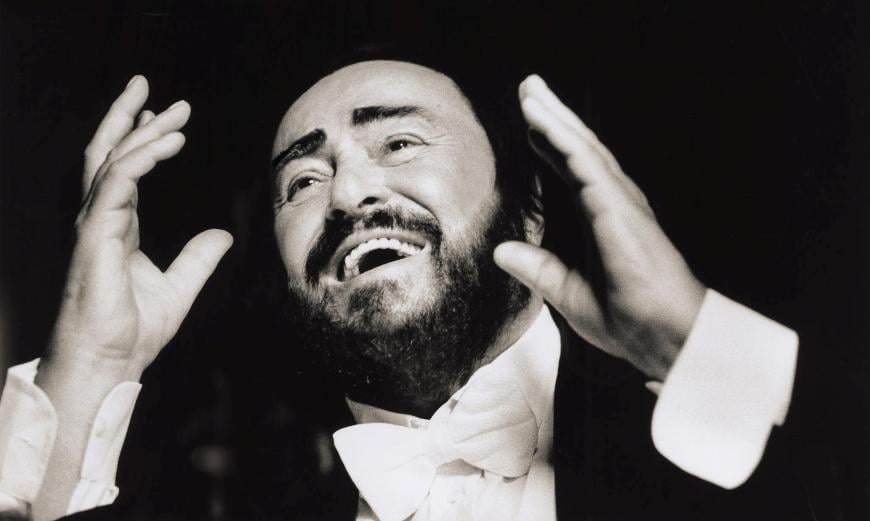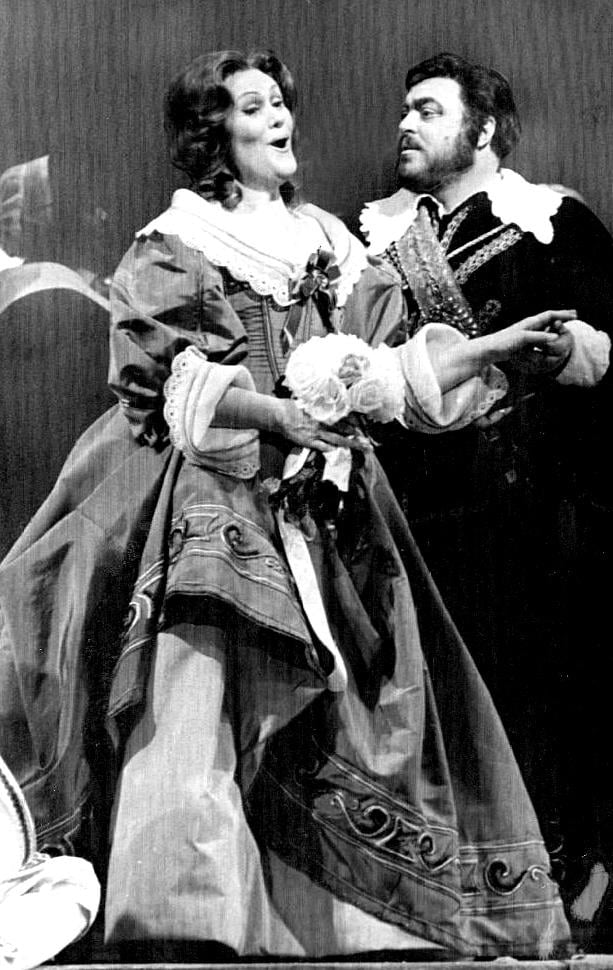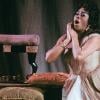
When tenor Luciano Pavarotti died in 2007, the classical world felt as though it had lost something that had been thought to be eternal: the unbroken link to the great tradition of Italian singing. Pavarotti’s stage partner and childhood friend Mirella Freni had retired, likewise his partners in the bel canto repertory revival: Joan Sutherland, conductor Richard Bonynge, and a whole list of great artists of the time.
And so the best of Pavarotti lists started to appear. And they’re still coming, as a cursory internet search will show. Often considered the greatest tenor of his era — which included, let’s not forget, Plácido Domingo and José Carreras — Pavarotti possessed an artistry that was always about more than just “ping” (the magnificent, ringing quality of the voice) or effortless high notes, memorialized in his recording of “Ah! mes amis” from Donizetti’s La fille du régiment, which earned him the unofficial title “King of the High Cs.”

Pavarotti’s greatest trait, one that he and others slaved over to perfect, was legato, the bound line, meaning the ability to sing a melody in a connected way in long arcs, without exaggeration or deformed vowels. His metaphor for legato was the headlights of a car. Regardless of the road conditions or the car itself, the singer is following that beam that never wavers. In the same way, Pavarotti maneuvers through his vocal break (passagio), past consonant clusters and high notes, all with nary a hiccup in the line. Excellent diction is not the enemy of the bound line.
In Pavarotti’s singing you also find dynamic variation; the man could sing a true pianissimo — that is, not just a contrast with the previous note but actual softness. He had an open sound rather than a muscular bark suitable for truck stops and, apparently, some major stages. Of course, in his later years, Pavarotti did some damage to his reputation with repeated cancellations, lackluster acting skills, and some offstage scandals. But he radiated a personal warmth onstage and off that went hand in hand with his singing, and even as his best vocal days passed, his understanding of the roles that were “his” gave us some great performances.
Here, then, is a list of where to begin among all the great Pavarotti recordings:
Carreras Domingo Pavarotti in Concert (Decca, 1990)
Yes, the purists are already turning away in disgust, but if you put aside snobbery, there’s a reason why this is the bestselling classical album of all time. While the experts prefer Pavarotti’s 1970s recording of “Nessun dorma” on the complete Decca recording of Puccini’s Turandot, the version here is one for the ages. And there’s also the tenor’s unsurpassable singing of Cavaradossi’s “Recondita armonia,” from Puccini’s Tosca, another iconic role for him, not to mention some Neapolitan songs. Indulge, and let the critics fidget.
La bohème (Decca, 1972)
If you’re going the full Pavarotti, you need to catch him with the soprano he literally grew up with, Mirella Freni, in their greatest partnership. You want chemistry between Rodolfo and Mimi, and of course you want spectacular singing. You can also catch the pair on a famous San Francisco Opera telecast (find that version here), but this recording, conducted by Herbert von Karajan, features some of the best singing and acting the tenor ever did. Maturity and gorgeous vocalism combined.
Rigoletto (Decca, 1971)
Early in his career, the partnership of Pavarotti, soprano Joan Sutherland, and conductor Richard Bonynge (Sutherland’s husband) was key to the tenor’s stratospheric rise. Out of many possibilities, try this recording of Verdi’s Rigoletto, with Pavarotti very possibly the most perfect Duke of Mantua in a complete recording. There are many chances to sample his take on the role, but here is the fresh-faced kid with the unbelievable voice, singing with bel canto veterans (including Sherrill Milnes as Rigoletto).
La fille du régiment (Decca, 1968)
OK, overkill on the early Pavarotti, but here’s a role where you need youthful enthusiasm, and you have that plus the singer who delivers nine high Cs in “Ah! mes amis” like he was relaxing by the pool. Plus Sutherland.
Idomeneo (Decca, 1983)
Mozart is now in the hands of musicians who understand historically informed performance. But Pavarotti’s assumption of the lead tenor role in this massive grand opera marked a turning point in our appreciation of a masterwork that had up till then been routinely ignored by opera companies. It’s a great performance, which can also be sampled on video from the Metropolitan Opera. This recording, though, features Edita Gruberova, Agnes Baltsa, Lucia Popp, and Leo Nucci, conducted by John Pritchard. Not bad at all.
Verdi Requiem (EMI, 1987)
There are lots of tenor moments in the Requiem, popularly dubbed “Verdi’s greatest opera.” And why not? The Requiem has terror, remorse, piety, and a quantity of pure bel canto beauty. The big tenor aria is the “Ingemisco,” and Pavarotti has plenty of competition for the laurels here. But this recording shows off all of the tenor’s bel canto knowledge, and it’s conducted by another devotee of that tradition, the great Riccardo Muti.
Un ballo in maschera (Decca, 1982)
One of the tenor’s own favorite roles, recorded when he was in top voice and conducted by another Decca star, Georg Solti. If you know anything about Pavarotti’s personality, you’ll see why this part seems like it was made for him.
O Holy Night (The Christmas Album) (Decca, 1976)
I saved the most controversial pick for last. Yes, I know that “O Holy Night” shows off the tenor’s heavily accented English in not a good way. Yes, I know that Christmas albums as a genre are often cheesy. This one, however, is not. If you listen to it, you’ll hear one of the most perfect renditions of Schubert’s “Ave Maria” ever committed to record, not to mention a number of songs that you don’t often get from carolers: a stunning version of César Franck’s “Panis angelicus,” “Gesù bambino” by Pietro Yon (which may remind you of a carol you do know), and plenty of others. Oh, and Pavarotti is backed by the Vienna Boys Choir and the National Philharmonic conducted by Kurt Herbert Adler.




